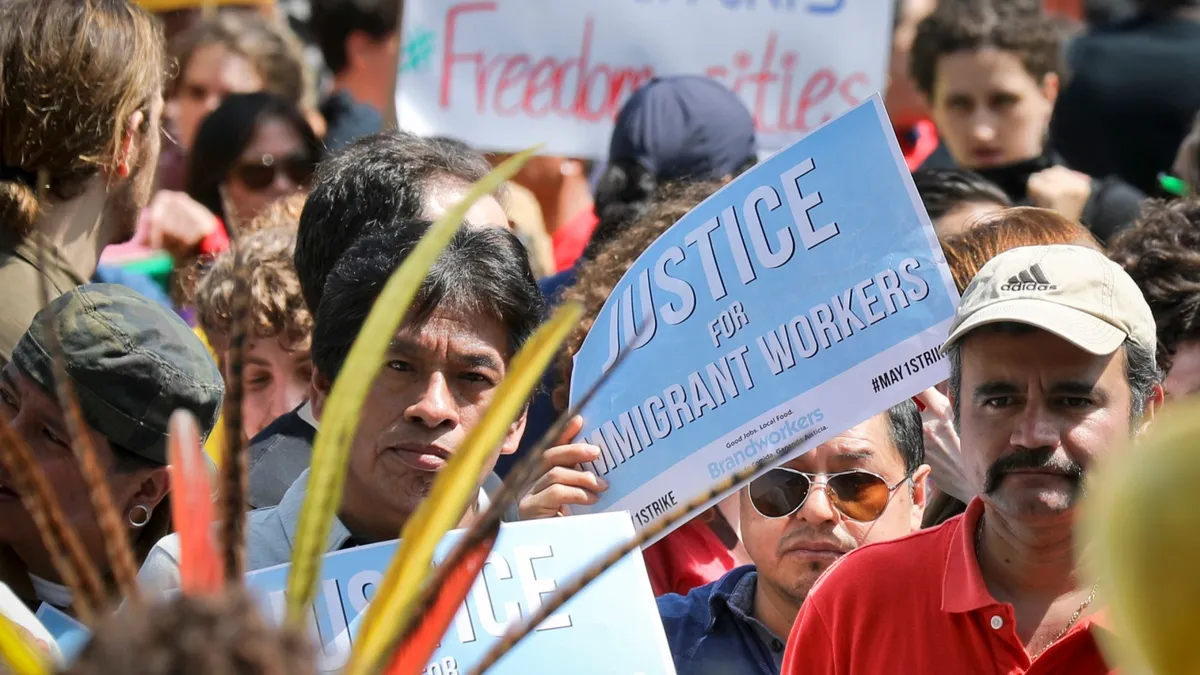
Tens of thousands of protesters are expected to flood the streets across the United States this Thursday during May Day rallies, expressing their dissent against the Trump administration. May Day, which is recognized globally as International Labor Day, is observed every year on May 1. This year, activists in the U.S. aim to leverage the momentum from recent widespread grassroots protests aimed at challenging the policies of the Trump administration.
Anti-Trump protesters have voiced a myriad of concerns regarding the administration's recent actions, which include the elimination of thousands of federal jobs, aggressive immigration raids, and the controversial involvement of billionaire Elon Musk in the downsizing of the U.S. government. These protests represent a coordinated effort to highlight what activists describe as an ongoing war on working people.
Organizers of the initiative, branded as May Day Strong, are sharpening their message to denounce what they perceive as attacks on the working class and immigrant communities. They assert that the administration, alongside its billionaire affiliates, poses a threat to labor rights, public services, and the safety of immigrants, regardless of their legal status. The organizers have explicitly stated their opposition to violent forms of protest, emphasizing that “This is a war on working people.”
According to the May Day Strong events web page, the administration is “defunding our schools, privatizing public services, attacking unions, and targeting immigrant families with fear and violence.” The rallying cry from these activists is clear: “We are reclaiming our power from corporate elites, and we will not be intimidated by Trump, Musk, or their billionaire backers. They've ruled for too long.”
While the U.S. does not officially observe Labor Day on May 1 due to a historical resistance to working-class unity, the American labor movement has found creative ways to commemorate this important day since the 19th century. The tradition began with a labor strike aimed at establishing the 8-hour workday. The American Federation of Labor organized a nationwide strike for May 1, 1886, during which many workers were demanding a reduction in their shifts that often lasted twice as long.
The Chicago strike, known as the Haymarket Affair, turned violent when police clashed with civilians, resulting in a bomb explosion. Although the bomb's intended target was unclear, four men linked to the protests were hanged for conspiracy to commit murder, becoming martyrs for the labor movement.
The significance of May Day in the U.S. has evolved over the years, particularly following the Pullman railroad strike in 1894, which was pivotal in solidifying the day as a labor holiday. President Grover Cleveland deployed federal troops to break the strike, further intertwining May Day with labor struggles.
Over the years, U.S. presidents have attempted to redefine the significance of May Day to distance it from labor movements. For instance, President Dwight D. Eisenhower designated May 1 as Law Day to emphasize the importance of the rule of law in protecting civil liberties, while moving Labor Day to September. More recently, during his first term, President Trump echoed this sentiment by declaring May 1 as Loyalty Day, a time to celebrate the nation's commitment to individual liberties.
Previous May Day protests during Trump's presidency have seen significant participation, particularly from immigrant communities opposing the Republicans' border wall plans and mass deportation efforts. Notably, the protests in 2006, sparked by a bill aimed at increasing penalties for illegal immigration, drew around 2 million demonstrators across 140 cities and 39 states.
This year’s planned May Day protests are significant not only for their scale but also for their potential to become the most widespread May Day events on record. According to Joseph McCartin, a professor of labor history at Georgetown University, more than 1,000 events are scheduled to take place in over 1,000 cities, marking a historic moment in the labor movement. “These protests will attract a broader array of people from diverse backgrounds,” McCartin noted, adding that the scale of participation will be unprecedented.